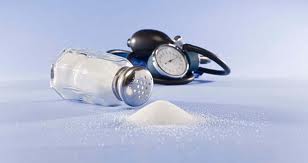 Most Brazilians consume more salt than recommended by national and international health bodies, which is 5 grams/day according to the World Health Organization (WHO). The analysis of personal food consumption, from the Family Budget Survey (POF) of the Brazilian Institute of Geography and Statistics (IBGE), released in 2011 shows that, in the case of young people, the data is even more alarming. More than 81% of boys and 77% of girls, all aged between 10 and 13 years, ingested more sodium than the maximum tolerable value. Among boys in this age group, 10% consumed more than twice this limit.
Most Brazilians consume more salt than recommended by national and international health bodies, which is 5 grams/day according to the World Health Organization (WHO). The analysis of personal food consumption, from the Family Budget Survey (POF) of the Brazilian Institute of Geography and Statistics (IBGE), released in 2011 shows that, in the case of young people, the data is even more alarming. More than 81% of boys and 77% of girls, all aged between 10 and 13 years, ingested more sodium than the maximum tolerable value. Among boys in this age group, 10% consumed more than twice this limit.
Although the terms are used interchangeably, salt and sodium are not the same thing. Sodium (Na) is a mineral that binds to chlorine (Cl) to form sodium chloride (NaCl), which is our table salt. Sodium plays an important role in several functions of the body, mainly in the balance between fluids inside and outside cells. It also acts in the transmission of nerve impulses throughout the body, thus allowing the brain to function and control our vital functions.
Chlorine, another mineral that makes up salt, is also essential for good health and is fundamental to the digestive process. In the stomach, it is the basis for gastric juice, which “breaks down” and helps digest food. It also increases the blood's ability to carry carbon dioxide from cells to the lungs. Together, in the form of salt, sodium and chloride (sodium chloride) are present in all tissues and fluids of the human body, such as sweat and tears. An adult man has about 250 grams of salt in his body.
Excess sodium can cause damage that goes far beyond hypertension, its best-known harm. A very hot study from the University of São Paulo proves that a molecule known as angiotensin II constantly formed in the bloodstream with the function of regulating blood pressure, could invade the heart tissues when the nutrient is consumed too much. The long-term consequence would be heart failure.
To make your day-to-day life, let's say, a little less sodium, it's not enough to “manage” the consumption of industrialized products, which are usually filled with the mineral. In fact, the main source of the nutrient in our diet is… the salt shaker. The conclusion is from endocrinologist Flávio Sarno, from USP, who cataloged data provided by the Brazilian Institute of Geography and Statistics, IBGE. “Around 70% of the sodium we ingest comes from table salt and salt-based condiments used in homemade preparations”.
A tip to replace it or consume less is to use herbs such as parsley, oregano, rosemary, chives, pepper, turmeric, sage, saffron and even lemon in seasoning salads, meat, poultry, fish.
